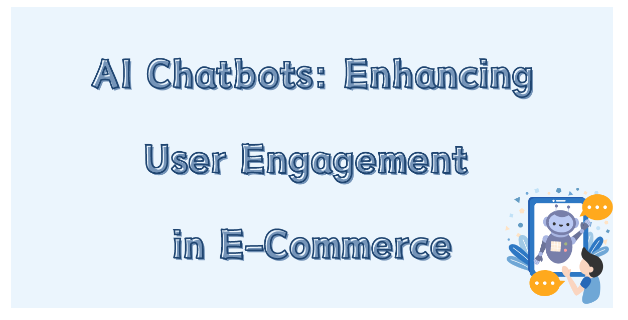Pricing Strategies for Reselling SEO Packages
Pricing Models Overview for Reselling SEO Packages
When venturing into the realm of SEO reselling, understanding the various pricing models available is crucial. Here, we will explore the most common pricing strategies used in SEO reselling: flat-rate pricing, multi-tiered pricing, and hour-based pricing.
Flat-Rate Pricing
Flat-rate pricing is straightforward and predictable, making it a popular choice among SEO resellers. Under this model, you charge a fixed price for a specific set of SEO services. This simplicity can make it easier for clients to understand and budget for your services, which enhances the appeal for small businesses or those new to SEO.
Multi-Tiered Pricing
Multi-tiered pricing offers various packages at different price points, each including progressively more services or higher levels of service. This model caters to a broader range of clients, from those needing basic SEO services to those requiring comprehensive strategies.
Hour-Based Pricing
Hour-based pricing charges clients based on the amount of time spent on their SEO tasks. This model is often used for customized projects or when the scope of work is uncertain.
Flat-Rate Pricing for Reselling SEO Packages
What is Flat-Rate Pricing?
Flat-rate pricing is a straightforward pricing model where SEO resellers offer a predefined package of services at a set price. This model simplifies the buying process for clients by providing them with a clear, upfront cost without any hidden fees. Services under this model are bundled into packages that cater to different levels of SEO needs, from basic to advanced, but each package is priced uniformly, regardless of the client’s specific circumstances or market conditions.
Pros of Using Flat-Rate Pricing in SEO Reselling
- Simplicity and Clarity: One of the biggest advantages of flat-rate pricing is its simplicity. Clients know exactly what they will pay from the beginning, making it easier for them to budget and decide on services without worrying about variable costs.
- Ease of Sales: For resellers, this model can streamline the sales process. Since the price and package details are fixed, it reduces the time spent on negotiations and customizations.
- Predictable Revenue: Flat-rate pricing allows SEO resellers to predict their revenue more accurately. This stability is beneficial for managing business finances and forecasting future growth.
Cons of Using Flat-Rate Pricing in SEO Reselling
- Lack of Customization: Since services are pre-packaged, there is little room for customization based on client-specific needs. This can make it difficult to address unique challenges or goals that do not fit neatly into the predetermined packages.
- Potential for Overpricing or Underpricing: Flat rates may deter clients who might feel the package is too generic or not perfectly aligned with their needs. Additionally, a flat rate might not adequately compensate resellers for the actual amount of work required for particular projects, especially if unexpected complexities arise.
- Competitive Disadvantages: In markets where competitors offer highly tailored SEO services, flat-rate packages might appear less attractive to potential clients looking for more bespoke solutions.
When to Use Flat-Rate Pricing Effectively
- Market Entry: For new SEO resellers entering the market, flat-rate pricing can be an effective strategy to attract initial clients by simplifying their decision-making process.
- Small Business Clients: Small businesses often prefer straightforward pricing and may not require highly customized SEO strategies. Flat-rate packages are ideal for this segment, providing essential SEO services without the complexity of extensive customization.
- Promotions: Flat-rate pricing can be useful for promotional or introductory offers to draw in new clients who may be hesitant to commit to more extensive, higher-cost packages.
Multi-Tiered Pricing in SEO Reselling
Definition and Structure of Multi-Tiered Pricing Models
Multi-tiered pricing is a flexible pricing strategy used by SEO resellers to offer different levels of services tailored to various customer needs and budgets. This model typically structures its offerings into several tiers, each with its own price point and corresponding set of services. The most basic tier might include essential SEO services such as keyword analysis and on-page optimization, while higher tiers could offer additional services like advanced link building, content creation, and technical SEO audits.
Benefits of Using a Multi-Tiered Approach
- Catering to Diverse Client Needs: This pricing model allows SEO resellers to serve a wide range of clients, from small startups needing basic SEO help to large enterprises requiring a comprehensive SEO strategy.
- Increased Up-selling Opportunities: With clear distinctions between each tier, clients can easily see what upgrading their package could offer them, making it simpler for resellers to up-sell more comprehensive services.
- Flexibility in Service Provision: Multi-tiered pricing provides the flexibility to tailor services to the specific needs of different market segments, enhancing customer satisfaction and retention.
Challenges and Considerations for Implementing Multi-Tiered Pricing
- Complexity in Management: Managing multiple service tiers can be complex, requiring detailed tracking and coordination to ensure that each client receives the appropriate level of service.
- Setting the Right Tiers and Pricing: Determining what to include in each tier and at what price point can be challenging. It requires a good understanding of the market and your clients’ needs to balance attractiveness with profitability.
- Communication Clarity: It is crucial to clearly communicate the differences between tiers to avoid confusion and misaligned expectations. Clients need to understand exactly what each tier offers and why higher tiers are priced higher.
Effective Use of Multi-Tiered Pricing
To effectively implement multi-tiered pricing, SEO resellers should conduct thorough market research to understand the specific needs and price sensitivities of their target demographic. Regularly reviewing and adjusting the tiers and services offered based on client feedback and changing market conditions can also help maintain the competitiveness and relevance of the offerings. Additionally, clear and transparent marketing of each tier’s benefits will aid clients in making informed decisions that align with their SEO goals.
Hour-Based Pricing in SEO Reselling
Outline of Hour-Based Pricing
Hour-based pricing in SEO reselling involves charging clients based on the actual number of hours spent working on their SEO projects. This model provides a transparent way to bill clients by documenting the hours dedicated to various SEO tasks such as keyword research, content creation, technical SEO adjustments, and more.
Advantages and Disadvantages Compared to Other Models
Advantages:
- Transparency: Clients can see exactly what they are paying for, which enhances trust and satisfaction.
- Flexibility: This model is adaptable to varying project scopes and can be ideal for projects where the workload is unpredictable or varies month to month.
- Fairness: Clients pay only for the work done, which can be more cost-effective for them if fewer hours are needed.
Disadvantages:
- Unpredictability: Clients may be wary of this model due to the potential for high costs if the project requires more hours than expected.
- Administrative Burden: Tracking and documenting hours can be time-consuming and requires meticulous record-keeping.
- Potential for Disputes: There can be disagreements over the hours billed if expectations are not managed properly.
Tips for Managing Client Expectations with Hour-Based Pricing
- Clear Communication: Ensure clients understand how you track hours and what tasks are involved. Regular updates and transparency are crucial.
- Estimates and Caps: Provide estimates for how many hours typical tasks take and consider setting a maximum number of hours to reassure clients about potential maximum costs.
- Detailed Reporting: Provide detailed reports that show how hours were spent, aligning them with measurable outcomes whenever possible.
Impact of Pricing Models on Profitability and Market Competitiveness
Analysis of How Pricing Affects Profitability in SEO Reselling
Pricing strategies directly impact the profitability of SEO reselling. Competitive pricing attracts more clients but must be balanced against the cost of delivering high-quality services. Conversely, higher-priced, premium services may promise better margins but require a clear value proposition to justify the investment to potential clients.
The Role of Competitive Pricing in Capturing and Retaining Clients
Competitive pricing helps penetrate markets and secure a client base. However, maintaining competitive prices while offering superior service can be challenging. Regular market analysis and adjusting prices to reflect the value delivered can aid in retaining clients and discouraging them from switching to competitors.
Strategies for Balancing Pricing with Service Quality
- Value-Based Pricing: Align pricing with the value perceived by the client. Understand the client’s business and how your services boost their performance or solve pain points.
- Tiered Services: Offer multiple service levels to cater to different needs and budgets, allowing clients to choose based on their financial capability and business requirements.
- Efficiency Improvements: Streamline operations to reduce costs without compromising service quality, thus maintaining profitability even when competitive pressures lead to lower pricing.
- Client Education: Help clients understand what goes into SEO services and why paying a premium might be beneficial for them in the long run.



